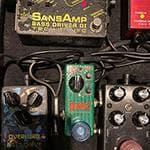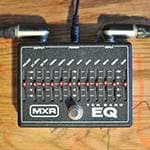Polyphonic Synthesizer Solos and Ensembles by Pink Floyd
In the previous issue, we examined synthesizer solos and polyphonic synthesizer ensembles from TOTO's first album.
This time, we will examine synthesizer solos and ensembles by Pink Floyd.
The synthesizers that created the masterpieces Madness and Wish You Were Here
Pink Floyd is a well-known British progressive rock band.
Their masterpiece Madness was released in 1973. The album is known around the world as a masterpiece that charted for 741 weeks from the year of its release to 1988. At the time of the album's release, synthesizers were not yet capable of producing chords, and monophonic synthesizers were the norm.
The synthesizers used by Pink Flond were Minimoog and EMS (Electric Music Studio) synthesizers, which, as Ryuichi Sakamoto commented, were highly regarded among musicians for the quality of their VCOs (transmitters). The EMS synthesizer was highly received among musicians.
When people first heard the song “Running Around” on the album Madness, which used the sequence function of the EMS synthesizer, they were very much aware of the unknown instrument called a synthesizer, and were astonished by the ever-changing and mysterious tones and sequence phrases.
The band's forward-thinking approach and music also attracted interest, and the name Pink Floyd became forever etched in people's minds.
EMS Synthi AKS Synthesizer
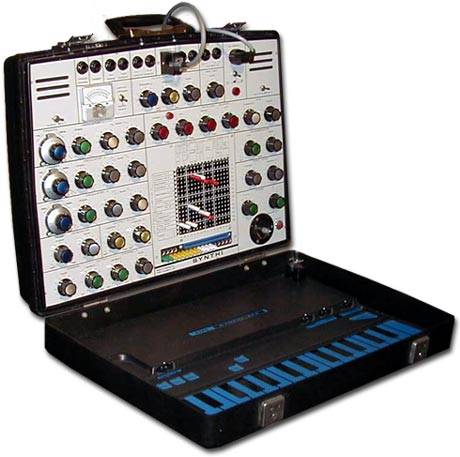
EMS Synthi AKS, CC-BY-3.0. (Quoted from Wikipedia)
A monophonic synthesizer released in 1972 by EMS (Electric Music Studios), a British synthesizer manufacturer. AKS's keyboard is a touch-sensor type. Sounds were entered by touching them with a finger.
Brian Eno was a heavy user of the EMS, and the synthesizer was featured on many of Eno's classic recordings.
The sequence phrase in the song “Running Around” can be seen on YouTube, where guitarist Dave Gilmour touches the touch keys of the AKS and reproduces the phrase “Running Around”.
■ Recommended album: Madness (1973)

This album starts with the sound of a heart. This heart sound is also synthesized from a mini-mog synthesizer. In “Running Around,” a sequence phrase by EMS synthesizer is heard, and announcements, sounds of people breathing, and the sound of shoes running around are inserted. As far as I know, Madness is the first time that these gimmicky sounds (SEs) are used effectively in an album. Multiple sound effects are mixed with the music and the world of Pink Floyd unfolds.
Synthesizers are not used in this album to take the theme of the song or at the beginning of the introduction. This is because synthesizers of the time could only produce single notes and could not play chords. In this sense, there were only a limited number of ways to use single-note synthesizers effectively.
Pink Floyd was a band that knew how to use synthesizers and was smart enough to use them effectively. The key player in the historical masterpieces was definitely the synthesizer.
Recommended song: “Running Around”
This song became known for its astonishing synthesizer sequence phrases.
The synchronization of the mechanical, inorganic sequence phrase and the synthesizer sound reminiscent of a hi-hat caught the ears of many as the antithesis of the music created by humans.
Recommended song: “To Your Favorite Color”
This is the only song on the album Madness that features a long mini-mog synthesizer solo from the beginning.
Unlike Rick Wakeman and Keith Emerson from the band Yes, Rick Wright, the keyboardist of Pink Floyd, was not the type of musician who put his technique at the forefront. He did not play fast phrases or difficult chords. His solos with portamento using the Minimoog's sawtooth waves had a core and tenacity. Typical Minimoog sound.
For Rick, this was a time when he was exploring the use of synthesizers. Solos were played on piano or organ, and the concept of playing synthesizers wasn’t quite there yet.
■ Recommended album: Flame (I Wish You Were Here) (1975)
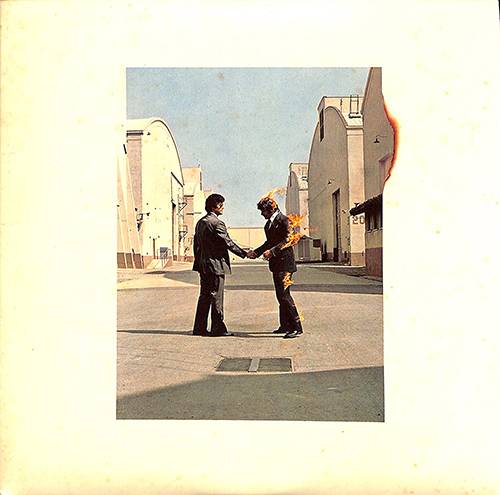
Pink Floyd's ninth original album, released in 1975. It is about the absence and thoughts of Syd Barrett, a member of the band at the time of its formation.
Pink Floyd was more oriented toward songs using synthesizer technology as a weapon than the album Madness.
On the other hand, they had to fight against the pressure because Madness became a big hit album.
The album is composed with Pink Floyd's typical track “Crazy Diamond” at the beginning and the end of the album, and their signature folky songs in between.
Synthesizers are heavily featured in “Crazy Diamond Part I”, the first track, and in Part II, the fifth track, where the theme is sung, and they are also used in other songs to increase the span of the album. (Diamond is a reference to Syd Barrett.)
The album cover artwork is by Hypnosis and Storm Torgerson.
Recommended song: “Would You Like a Cigar?”
The Minimoog is used more frequently throughout this album. The synthesizer solo in the latter part of the song slightly shifts the tuning of the sawtooth wave of the VCO, the oscillator of the Minimoog, to give the sound more depth. Also, the use of portamento was well done. Every time the portamento changes the time at each point of the solo to give the solo more expression.
Recommended: “Crazy Diamond Part I”, “Part II”
The Minimoog plays a big role in this song. The horn-like tone in Part I is soft with a triangular wave, but has a core unique to the Minimoog. There is a slight portamento. Part II also bursts with the Minimoog sound from the beginning. The resonance of the VCF is raised higher than in Part I, and a muffled tone with a stronger impression than in Part I is used.
In any case, the quality of the VCO in the Minimoog's sound is high, and even if the head of the waveform is shaved off by the VCF cutoff, it has the advantage of ensuring a tone that doesn’t get buried in the orchestration. The resonance is also sharp. Rick Wright understands these characteristics and uses the Minimoog well.
Musicians, albums, and songs featured in this issue
- Artist:Pink Floyd, Rick Wright
- Album: Madness, Flames (Wish You Were Here)
- Songs: “Running Around,” “Your Favorite Color,” “How About a Cigar,” “Crazy Diamonds Part I”, “Part II”
- Instruments used: EMS Synthi AKS synthesizer, Minimoog synthesizer
The “sound & person” column is made up of contributions from you.
For details about contributing, click here.





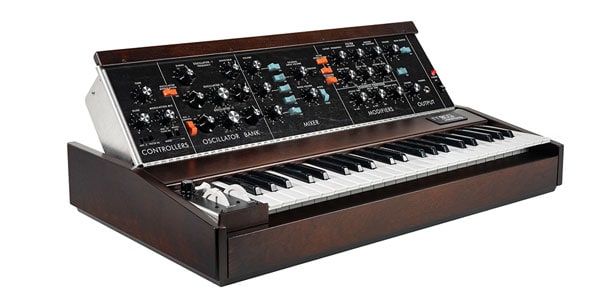

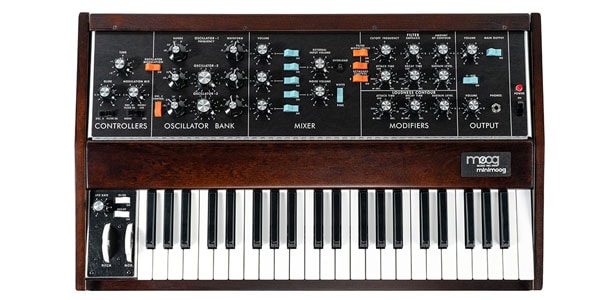
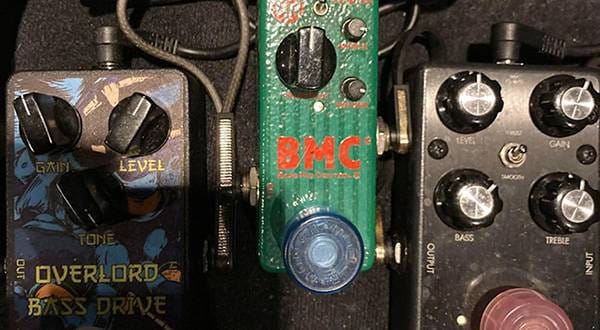

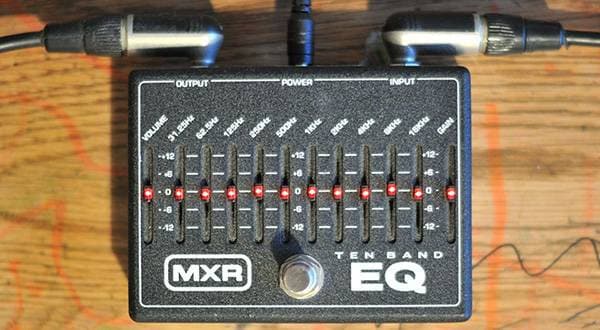


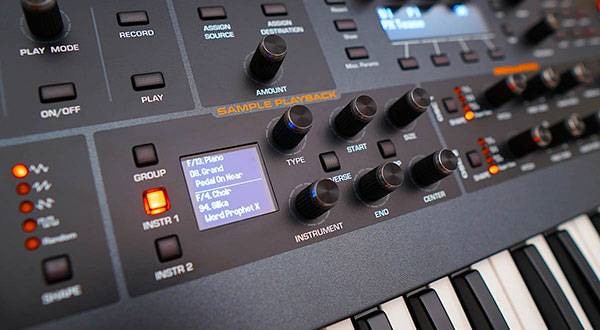
![[2025 Latest Edition] Choosing a Synthesizer/Popular Synthesizers Ranking](/contents/uploads/thumbs/2/2022/9/20220916_2_19446_1.jpg)

![Rock’n Me 15: Talking About Western Music - One-Man Bands [Prog Only]](/contents/uploads/thumbs/5/2022/1/20220128_5_16436_1.jpg)


 USB接続MIDIインターフェイス
USB接続MIDIインターフェイス
 USB接続対応のMIDIキーボード
USB接続対応のMIDIキーボード
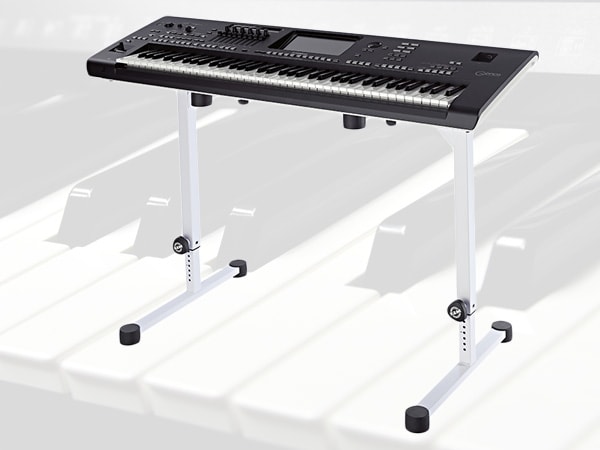 キーボードスタンドの選び方
キーボードスタンドの選び方
 自分にあったピアノを選ぼう!役立つピアノ用語集
自分にあったピアノを選ぼう!役立つピアノ用語集
 サスティンペダルの極性について
サスティンペダルの極性について
 キーボードスタートガイド
キーボードスタートガイド
